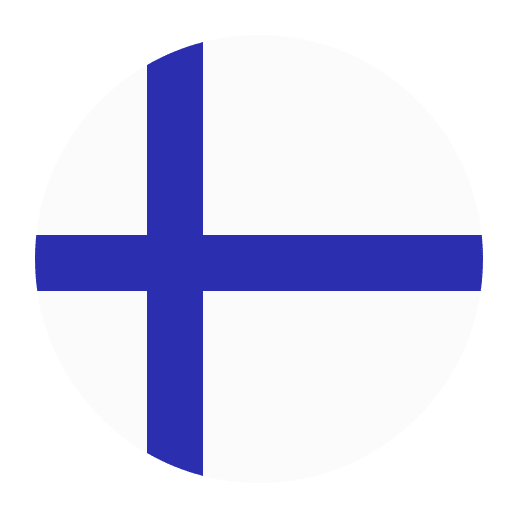Creating a Finnish Language Portfolio
Learning a new language is an exciting journey that can open doors to new cultures, experiences, and opportunities. For English speakers, Finnish may seem like a daunting language to tackle due to its unique grammar, vocabulary, and pronunciation. However, with the right strategies and tools, mastering Finnish can be an achievable and rewarding goal. One effective strategy for language learning is creating a language portfolio. This article will guide you through the process of creating a comprehensive Finnish language portfolio that will help you organize your studies, track your progress, and stay motivated.
What is a Language Portfolio?
A language portfolio is a personalized collection of documents and materials that demonstrate your language learning journey. It includes evidence of your progress, achievements, and reflections on your learning process. The portfolio can be digital or physical and is meant to be a dynamic, evolving resource that grows with you as you advance in your language studies.
Why Create a Language Portfolio?
1. **Organization**: A portfolio helps you keep all your learning materials in one place, making it easier to review and revise.
2. **Motivation**: Seeing your progress documented can be incredibly motivating and can help you stay committed to your language learning goals.
3. **Self-Assessment**: A portfolio allows you to reflect on your strengths and areas for improvement, facilitating a more targeted and effective learning approach.
4. **Showcase Skills**: If you’re learning Finnish for professional reasons, a portfolio can serve as evidence of your language proficiency to potential employers or educational institutions.
Setting Up Your Finnish Language Portfolio
Choosing the Format
First, decide whether you want a physical or digital portfolio. Each has its pros and cons:
– **Physical Portfolio**: This can include notebooks, binders, flashcards, and printed documents. It’s tangible and can be very satisfying to flip through, but it may be less convenient to carry around.
– **Digital Portfolio**: This can be created using tools like Google Drive, Evernote, or dedicated portfolio apps. It’s easily accessible from anywhere and can include multimedia elements like audio recordings and videos.
Sections to Include
Your Finnish language portfolio should be divided into various sections to cover different aspects of your learning. Here are some suggested sections:
1. Goals and Objectives
Start your portfolio with a clear statement of your language learning goals. These can be short-term goals (e.g., learning basic greetings and introductions) and long-term goals (e.g., achieving fluency or passing a proficiency exam).
2. Learning Plan
Outline your learning plan, including the resources and strategies you will use. This might include language courses, textbooks, apps, online resources, and language exchange partners. Make a weekly or monthly study schedule to stay on track.
3. Vocabulary
Dedicate a section to vocabulary building. Include lists of new words and phrases, along with their meanings and example sentences. You can also create flashcards or use apps like Anki to help with memorization.
4. Grammar
Finnish grammar can be challenging, so having a dedicated section for grammar rules and exercises is essential. Include explanations of key grammatical concepts, conjugation tables, and practice exercises.
5. Listening and Speaking
Practice is crucial for developing listening and speaking skills. Include recordings of yourself speaking Finnish, either through language exchange conversations or self-practice. Add links to podcasts, YouTube channels, and other listening resources. Keep a log of new phrases and expressions you hear and practice using them in context.
6. Reading and Writing
Incorporate reading materials such as articles, short stories, and poems in Finnish. Write summaries, reflections, or even creative pieces in Finnish. This section can also include corrections and feedback from teachers or language exchange partners.
7. Cultural Notes
Language learning is deeply intertwined with culture. Include a section on Finnish culture, traditions, history, and current events. This will help you understand the context of the language and make your learning more meaningful.
8. Assessments and Progress Tracking
Regularly assess your progress with quizzes, tests, or self-assessment tools. Document your scores and reflect on areas where you need improvement. This section can also include feedback from teachers or language exchange partners.
Resources for Learning Finnish
To build a comprehensive Finnish language portfolio, you need access to high-quality learning resources. Here are some recommended resources to include in your portfolio:
Textbooks and Workbooks
– **”Complete Finnish” by Terttu Leney**: A comprehensive guide for beginners that includes audio resources.
– **”Finnish for Foreigners” by Aaltio, Aaltio, and White**: A well-known series that covers grammar, vocabulary, and exercises.
Online Courses and Apps
– **Duolingo**: A popular language learning app that offers Finnish courses for beginners.
– **Memrise**: Another app that uses spaced repetition to help you memorize vocabulary and phrases.
– **Yle Kielikoulu**: An online language school offering Finnish courses at various levels.
Podcasts and YouTube Channels
– **”Sisu Radio”**: A podcast that covers a range of topics in Finnish, suitable for intermediate learners.
– **”Learning Finnish with Sebu”**: A YouTube channel that offers lessons on Finnish grammar, vocabulary, and pronunciation.
Language Exchange Platforms
– **Tandem**: An app that connects you with native Finnish speakers for language exchange.
– **HelloTalk**: Another platform for language exchange that includes text, voice, and video chat options.
Tips for Using Your Finnish Language Portfolio Effectively
Creating a portfolio is just the first step. Here are some tips to make the most of it:
1. Regular Updates
Your portfolio should be a living document that you update regularly. Set aside time each week to review and add new materials, reflect on your progress, and adjust your learning plan as needed.
2. Reflective Journals
Include a reflective journal where you can write about your learning experiences, challenges, and successes. Reflecting on your learning process can help you gain insights and improve your strategies.
3. Seek Feedback
Share your portfolio with teachers, language exchange partners, or fellow learners to get feedback. Constructive criticism can help you identify areas for improvement and stay motivated.
4. Celebrate Milestones
Acknowledge and celebrate your achievements, no matter how small. Reaching milestones, such as completing a textbook or holding a conversation in Finnish, can boost your confidence and keep you motivated.
Sample Entries for Your Finnish Language Portfolio
To give you a better idea of what to include in your portfolio, here are some sample entries:
Goals and Objectives
– **Short-term Goal**: Learn 50 new Finnish vocabulary words related to everyday activities by the end of the month.
– **Long-term Goal**: Pass the YKI (National Certificate of Language Proficiency) test at the intermediate level within a year.
Learning Plan
– **Resources**: “Complete Finnish” textbook, Duolingo app, “Sisu Radio” podcast, Tandem language exchange.
– **Weekly Schedule**:
– Monday: 1 hour of Duolingo, 30 minutes of vocabulary review.
– Wednesday: 1 hour of textbook study, 30 minutes of writing practice.
– Friday: 1 hour of listening to “Sisu Radio,” 30 minutes of speaking practice with a language partner.
Vocabulary
– **Word List**:
– **kahvi** (coffee) – “Juon kahvia aamulla.” (I drink coffee in the morning.)
– **kirja** (book) – “Luen kirjaa illalla.” (I read a book in the evening.)
Grammar
– **Verb Conjugation**:
– Present Tense of “olla” (to be):
– minä olen (I am)
– sinä olet (you are)
– hän on (he/she/it is)
– me olemme (we are)
– te olette (you all are)
– he ovat (they are)
Listening and Speaking
– **Listening Log**:
– “Sisu Radio” episode on Finnish cuisine – Learned new words like “karjalanpiirakka” (Karelian pasty) and “kalakukko” (fish pie).
Reading and Writing
– **Reading Reflection**:
– Read an article on Finnish saunas. Wrote a summary and learned new cultural insights.
Cultural Notes
– **Finnish Traditions**:
– “Juhannus” (Midsummer) – Celebrated with bonfires, dancing, and sauna. It’s a significant cultural event in Finland.
Assessments and Progress Tracking
– **Quiz Results**:
– Scored 80% on a vocabulary quiz. Need to review words related to food and drink.
Creating a Finnish language portfolio is a powerful tool that can enhance your learning experience and help you achieve your language goals. By organizing your materials, tracking your progress, and reflecting on your learning journey, you can stay motivated and make steady progress in mastering Finnish. Whether you choose a physical or digital format, remember that your portfolio is a dynamic, evolving resource that should grow with you as you advance in your language studies. Happy learning!

